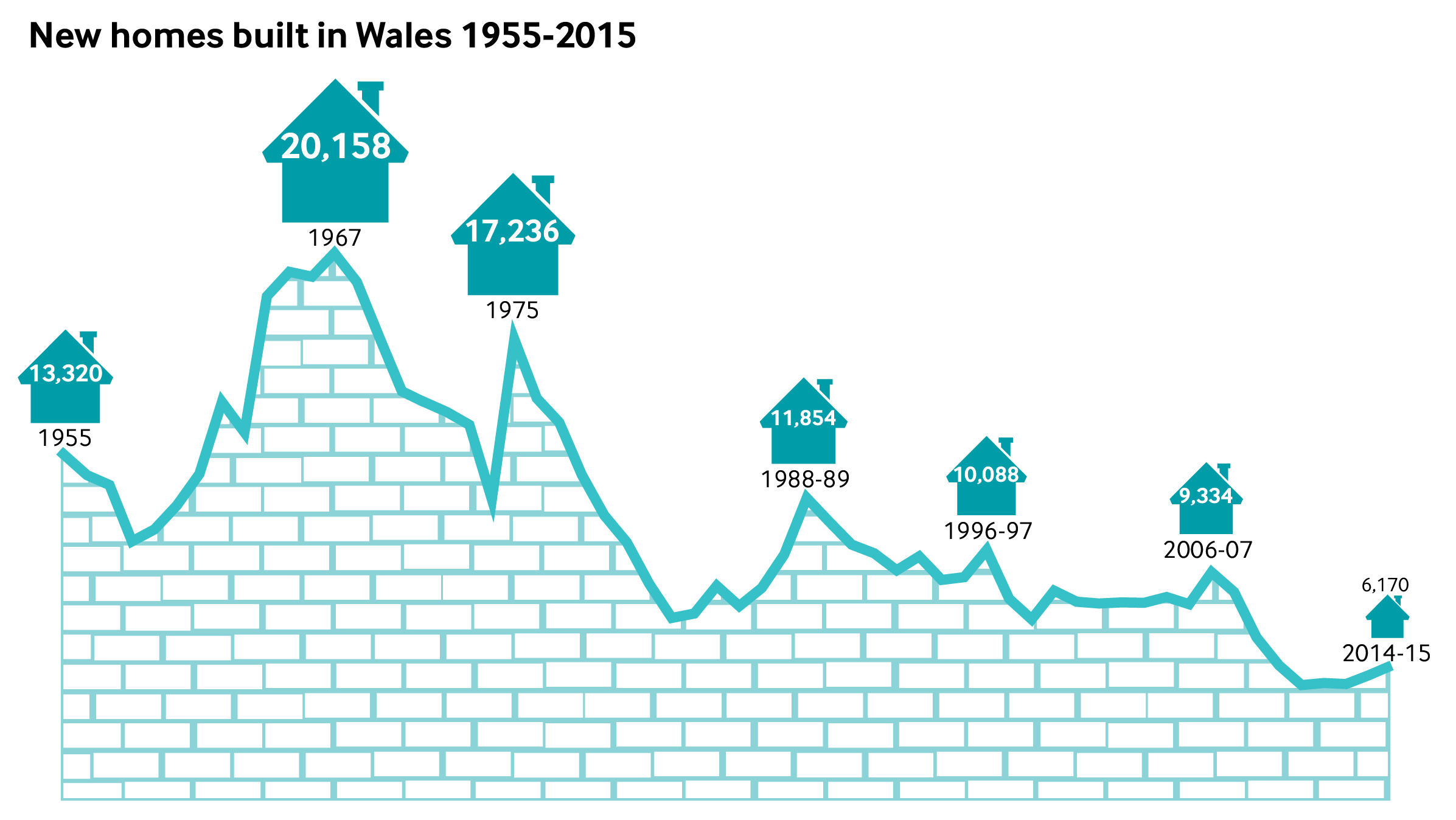Article taken from Key Issues 2016 document
Whether a first time buy, a short term let or simply somewhere to call home, we all have different housing needs and aspirations. But is the Welsh Government doing enough to meet the nation’s housing requirements?
Wales is not building enough homes. An inadequate supply of housing has a negative impact not just on an individual’s welfare, but on a nation’s economic wellbeing. That is why increasing housing supply should be a high priority for the new Welsh Government. Recent research has found that there needs to be a return to rates of house building not seen for several decades to keep up with need and demand. Despite some evidence of increasing supply recently, there is an annual shortfall of up to 5,000 homes. Those extra homes cannot be delivered by the private, public or third sectors acting in isolation, but rather by the combined efforts of the whole sector under the Welsh Government’s strategic leadership.
How many homes do we need?
Recent research by the late Dr Alan Holmans – acknowledged as the UK’s preeminent expert in projecting future housing need and demand – suggests that Wales could need as many as 12,000 new homes each year. This is largely due to an expected increase in the number of single person households. In 2014-15, just over 6,000 new homes were built in Wales. Fifty years ago, we were building around 20,000 homes a year. 
Who will build the new homes?
In 1955, over 70% of all new homes were built by the public sector. Sixty years later, that situation has reversed, with over 80% of new homes built by the private sector. In 2015, the Welsh Government signed a housing supply pact with the Home Builders Federation to emphasise the importance of that partnership, including the role the private sector plays in delivering affordable housing. That followed a similar pact signed with Community Housing Cymru, which represents housing associations. Housing associations provided 89% of all new affordable housing in 2014-15, the majority of which was supported by a Welsh Government grant. In 2016-17 it is estimated that 2,700 new affordable homes will be delivered by housing associations, local authorities and the private sector. That is about half the number required according to the Holmans research, although the ‘social sector’ definition he uses also includes privately rented properties where housing benefit is claimed to help pay the rent. There is also a role for the private rented sector in generating investment in new-build properties. At 14% of the entire housing stock and growing, twice as many people rent from private landlords as from local authorities. This increase in the size of the sector has been described as the largest structural change in the housing market for two generations.
Affordable Housing
This includes social rented housing provided by both local authorities and housing associations, as well as intermediate housing. Intermediate housing means properties where prices or rents are above those of social rented housing but below market housing prices or rents.
What are the barriers to homebuilding?
With median house prices in Wales in 2015 standing at over six times the median income (compared to around three times the median income in 1999), one of the main obstacles to home ownership and the supply of new homes has been the availability of mortgage finance. To address this, the last Welsh Government introduced the Help to Buy Wales scheme. It assists home ownership by allowing those with a smaller deposit to purchase a home while it also supports the construction industry. The scheme has helped around 3,000 households buy a home. It was recently extended to 2021 with potential to help up to a further 6,000 households. Developers cite unnecessary bureaucracy in the planning system, additional costs imposed through building regulations, inadequate land supply and the method of providing affordable housing as part of new developments as development barriers. They also claim it makes Wales a less attractive place to invest development money. These factors can all affect viability and stop a development before it begins.
The way forward?
Historically, a relatively small amount of public funding has been allocated to housing in Wales. With capital grants in particular unlikely to increase substantially during the Fifth Assembly, there will need to be close co-operation with the housing association sector in particular as it looks for more innovative and sustainable ways to fund affordable housing. Even with additional direct funding, no Welsh Government can meet the need for housing on its own. Through partnership working with stakeholders across the public, private and third sectors, the Welsh Government can provide a strategic lead and regulatory environment that encourages and facilitates development. During the Fourth Assembly, the Welsh Government looks to have met its own target of delivering 10,000 additional affordable homes. Will the Fifth Assembly see a more ambitious affordable housing target in line with the Holmans research and, for the first time, an overall target for homebuilding? Is it also time to develop a new national housing strategy? To some extent, the Welsh Government’s success will be assessed using crude statistics: homelessness, house building and home ownership. But we know housing impacts more widely, on health, educational attainment and poverty, while also bringing wider economic and regeneration benefits. In reality, housing’s sphere of influence goes far beyond bricks and mortar. The success of the next Welsh Government’s housing policy should be judged in that context.
Key sources
- NLP, The Economic Footprint of House Building in Wales (2015)
- PPIW, Future Need and Demand for Housing in Wales (2015)
- Stats Wales, New House Building (2016)
- Stats Wales, Dwelling Stock Estimates (2016)
- PPIW, The Potential Role of the Private Rented Sector in Wales (2015)
- Welsh Government, Affordable Housing Provision 2014-15 (2015)
- Welsh Office, Welsh Housing Statistics No. 2 1982 (Hard copy) (1983)
Article by Jonathan Baxter, National Assembly for Wales Research Service






